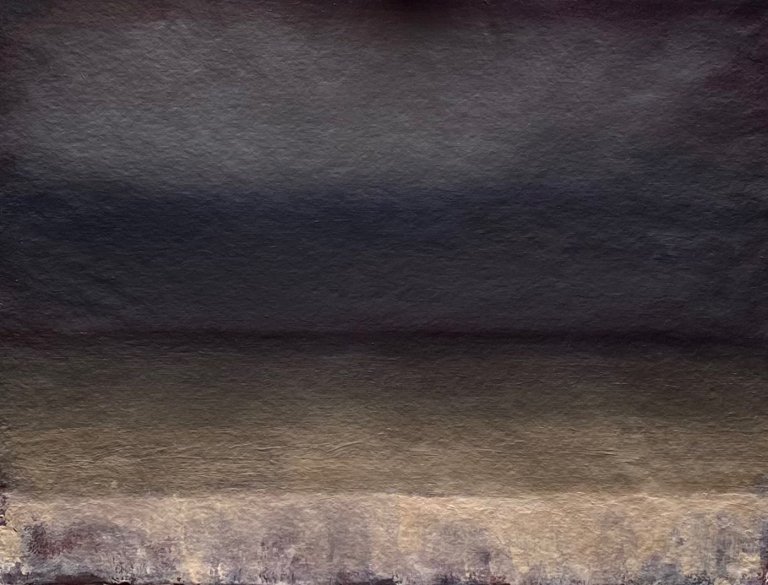
TOBIT ROCHE
4 September - 2 October
The Sea and Sky meet each other at the horizon yet the horizon is always out of reach: as we move towards it, it continually backs away from us. The Sea and Sky bounce off one another reflecting each other’s light and darkness, and yet sometimes they merge, to become almost one in a sublime fourth dimension, hovering or disappearing on the horizon. Both are endowed with endless ever-changing moods: there can be anger and danger as well as peace and calm and this is tied to our own human emotions and how we look upon the world.
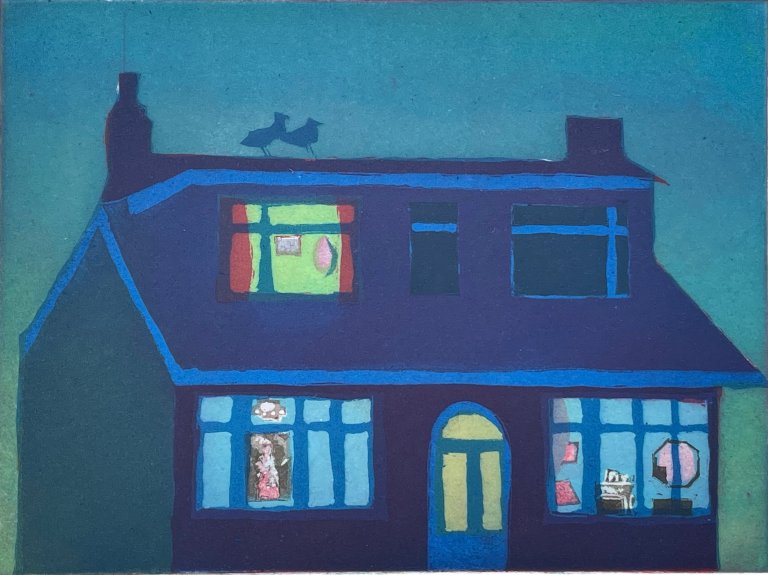
SAMANTHA CARY
4 September - 2 October 2021
For a few years the suburban area in which I live in the Northeast of England on the North Sea coast had provided a fertile ground for me, a meeting of suburban order, lives lived tidily, peacefully and busily pushing against the wilder forces of weather, animals and elements. Although humans did not appear in this work, the images were resonant with their presence. Lockdown has revealed to me, more than ever, how the ticking over of these lives against a background of something less certain was at the heart of this work.
Both this feeling of being stuck for material and the pulse of lockdown life are behind the series of ten etchings called A Soap Opera. The series depicts the same house over an ambiguous time period, repeated over and over with minute changes in colour, light and little details. The prints were made in my garden shed studio between December 2020 and March 2021, a period that we came to know as Lockdown 2 and are loosely based on a house that I can just see from my window that hijacked my attention as I sat on the sofa watching the news during the bewildering evenings of the first Lockdown.
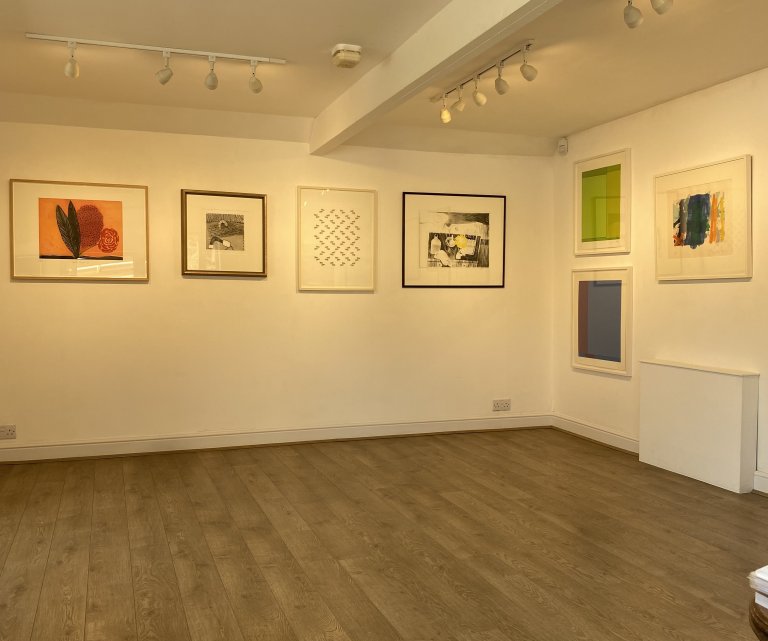
SUMMER EXHIBITION
24 July - 21 August 2021
Including work by Peter Archer, Charlie Baird, Elizabeth Blackadder, John Buckland-Wright, Samantha Cary, Gary Cook, Eileen Cooper, William Crozier, Kim Donaldson, Tess Jaray, Tom Hammick, John Piper, Mary Fedden, Brian Hanscomb, Matthew Hilton, Albert Irwin, Ken Kiff, R.B.Kitaj, Ursula Leach, Alexander Massouras, Robert Medley, Theo Mendez, Emily Myers, David Nash, Chris Orr, Howard Phipps, John Ridgewell, Christopher Riisager, Tobit Roche, Ludwig Sander, Peter Sedgley, Liz Somerville, Richard Smith, Rowland Suddaby, Patricia Swannell, Yo Thom, Michael Williams, William Wright, George Young
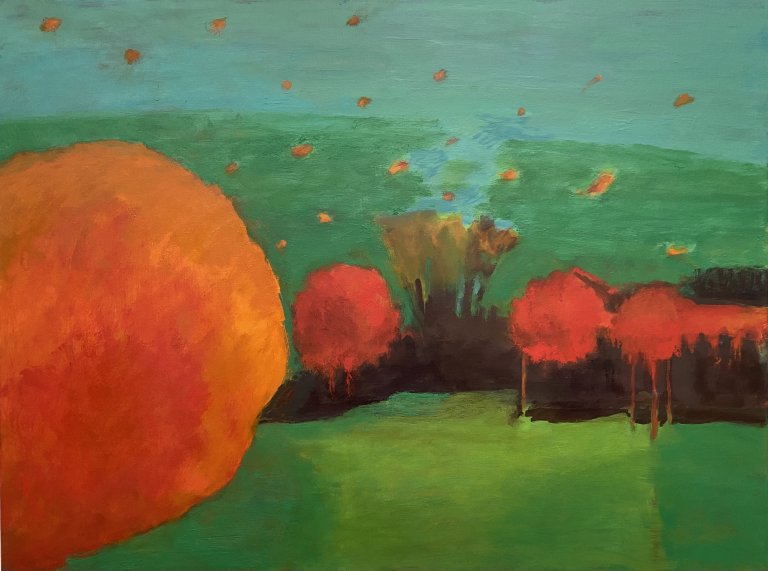
URSULA LEACH
12 June - 10 July 2021
I walk and draw in the landscape almost daily. Drawing seems to me the first step to really seeing and understanding the territory. As some particular combination of colour and shape alerts me I stand and draw. It may only be a fleeting moment of visual excitement, in fact it is sometimes something seen from the car in a flash and I have to return to exactly the same place at the same time of day to find that combination of colour and light again having marked the place with a stick to know where I stood.
To start with I just respond to the subject but as the work progresses in the studio the ideas and meaning develop along with much editing and I find out what it really was about that subject that caught my attention.
There are three strands of work in this exhibition. One to do with current agricultural practises on the downs, large areas of one colour denoting monoculture, aridity, erosion. Things placed on the edge of the image indicate possible sidelining, disappearance, fragmentation.
Recently, now living near to a softer landscape I have become entranced by the abundance of trees and this work has become more celebratory and even more about colour. Placing one colour against another I hope to produce the feeling needed to recreate the intensity of a visual experience.
Colour is the main preoccupation as it also is in the third strand of work which is about Greece and its’ seas and mountains.
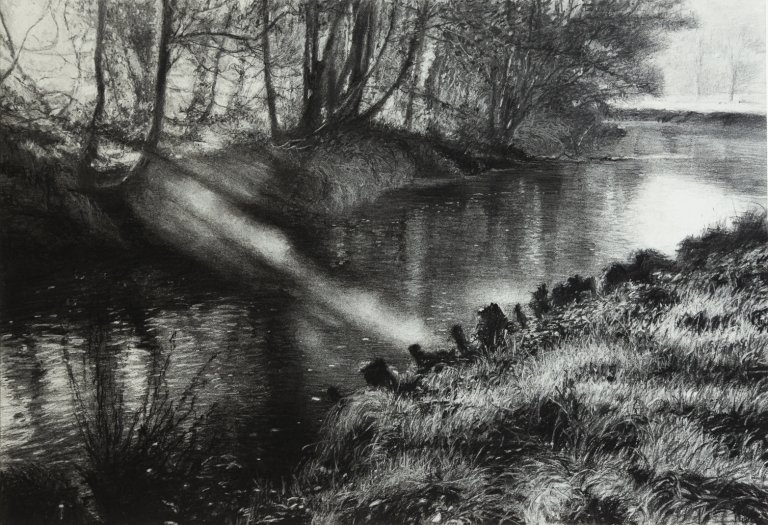
CELIA DE SERRA
12 June - 10 July 2021
I live in a small village in mid Wales, near Offa’s Dyke, nestling in the foothills of the Cambrian mountains. I’ve always lived and worked in the countryside and my art practice is very much about the natural world. Although I began as a painter, I returned to drawing about 10 years ago. The drawing seems to have become my main focus - there is an immediacy and directness about it that I love; the marks, the tonal variations, the capacity to build up layers and depth without any confusion of colour. I use graphite pencil and charcoal (compressed/willow charcoal and conte, depending on the image) and predominantly work in my studio as the drawings are very time consuming to make - there are a lot of minute alterations and interventions that happen before the image ‘pops’.
I spend a lot of time exploring the countryside with my camera and sketch pad. I look for images that have something about them. A sense of place is very important, so is the atmosphere created by different light effects - the way light can transform something, or illuminate a scene in a curious, otherworldly, or dramatic way. I never know what I might come across when I’m out and about, or what one idea might lead to. It’s a constant process, and I often return to the same favourite locations year on year to experience changes in the weather, mood or light; or find things in the landscape that have been left or altered.
In this exhibition I have included drawings of one of my favourite places - the Iron Age Hill Fort of Lewesdon Hill in West Dorset. There is a distinct sense of history amongst its ramparts, the ghosts of ancient civilisations etched into the landscape. The mixed broadleaf woodland that clocks the slopes of the hill is sympathetically and lightly managed by the National Trust and is a haven for wildlife. An old drovers road skirts along the western edge of the hill and avenues of knotted beach trees are abandoned hedges which now grow in strange and contorted shapes. It’s an incredibly rich environment to draw.
The other drawings in the exhibition are from a new favourite place - the River Fowey at Lostwithiel, Cornwall. Again, it’s a landscape that has seen huge changes in its history. Lostwithiel was once a very active port - the harbour is gone now, and the river is sufficiently silted up to produce a slow, meandering flow to the sea. Trees line its bank, and if you’re lucky you might see the blue flash of a kingfisher. The area that was the town dump, where land and water meet, is now a nature reserve bounded by two rivers and it’s here that I have found more rich subject matter for my work.
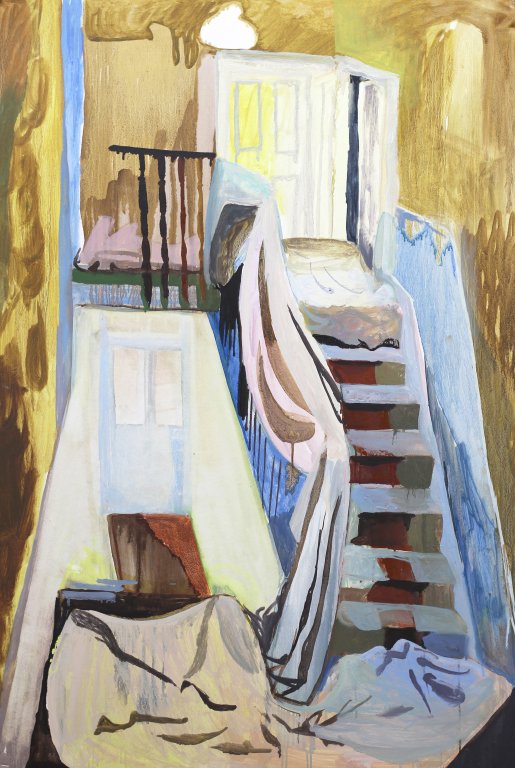
GEORGE YOUNG
1 - 29 May 2021
My work starts with a real event or situation and often through several versions of paintings, it moves from being more directly representational to a much more constructed composition. It is a process of stripping out the inessential and expanding on the more painterly and symbolic elements.
These paintings are largely painted during lockdown, so there’s a lot of latent energy and emotion. I was drawn to painting things shrouded in dust sheets as a symbol of life in stasis but as it is beginning to feel like we’re coming out into a spring time so there is quite a lot of colour and optimism showing through the drab.
My work is diaristic because I’ve found that the paintings come out better that way, if I have direct knowledge of the subject and emotional interest. The trouble has been what do you paint when you’re not able to go out much. The work has been focussed inward for a year but there’s plenty to look at and analyse. The best thing about it has been the ability to examine these spaces as psychologicaly loaded.
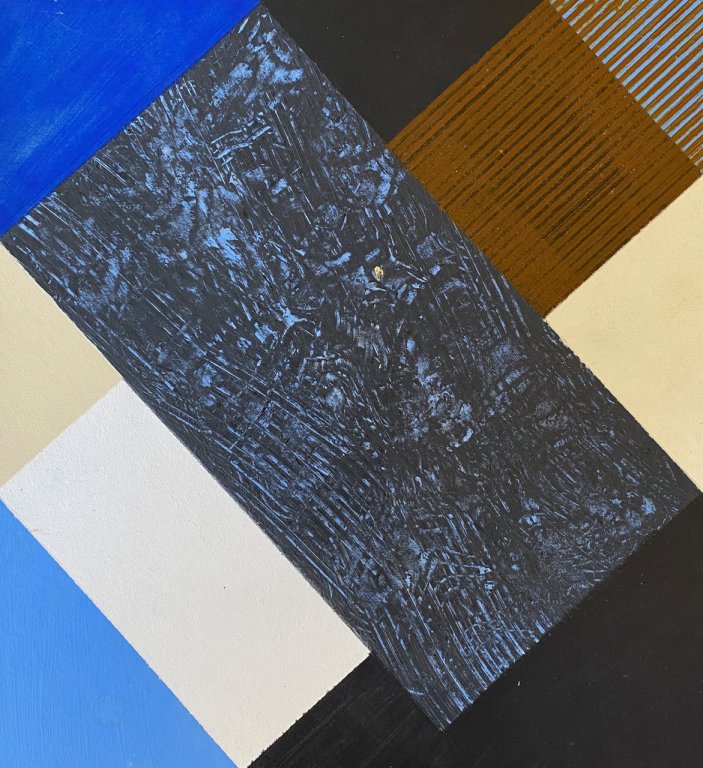
THEO MENDEZ (1934-97)
Paintings, drawings and textile designs from 1953-1988
1 - 29 May 2021
Born in London in 1934, Theo lived his whole life in that city, as an artist and teacher. He studied at Camberwell in the 1950’s as a contemporary of Terry Frost, Howard Hodgkin, Gillian Ayres and Ewan Uglow. His work reflects the mid twentieth century, moving from figuration to abstraction. The drawings date from the 1950's and the abstract paintings from 1984 which was the year he retired from his position as head of the Textile and Design Department of Camberwell School of Art. Mendez had been a strong and inspirational teacher and the textile course became widely acclaimed under his leadership, launching many successful careers in the UK fashion and design world, including Georgina Von Etzdorf, John Galliano, Katherine Hamnett and Vivienne Westwood.
Theo had a passion for music, which he listened to constantly when painting - French music, Debussy, Milhaud and Poulenc, as well as jazz and Argentine tangos: ‘sometimes the work comes directly from music, to which I listen for several hours every day, like food and drink, it is essential. If I achieve anything at all, it has, for me, to stand lasting contemplation - mystical, intangible’.
During his lifetime, Theo exhibited widely including at the Redfern Gallery, the Victoria and Albert Museum, the Arnolfini in Bristol, the Bear Lane in Oxford and the South London Gallery.
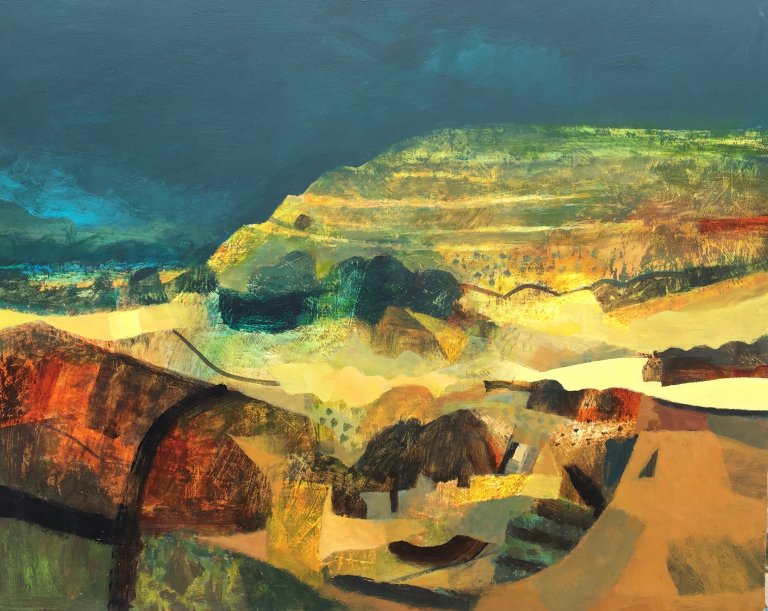
CHARLIE BAIRD
20 March - 17 April 2021
In these paintings from the last year with its limited possibilities fo travel Charlie Baird has continued to delve into place and memory often taking a more abstract approach to evoke landscape and its contextual history of human influence alongside more figurative images, inspired by lockdown walks in Dorset. Much of the work evolves from a balancing of precision and gesture, accident and intent, layering and scraping back, until the painting takes on its own sense of hidden and revealed history.
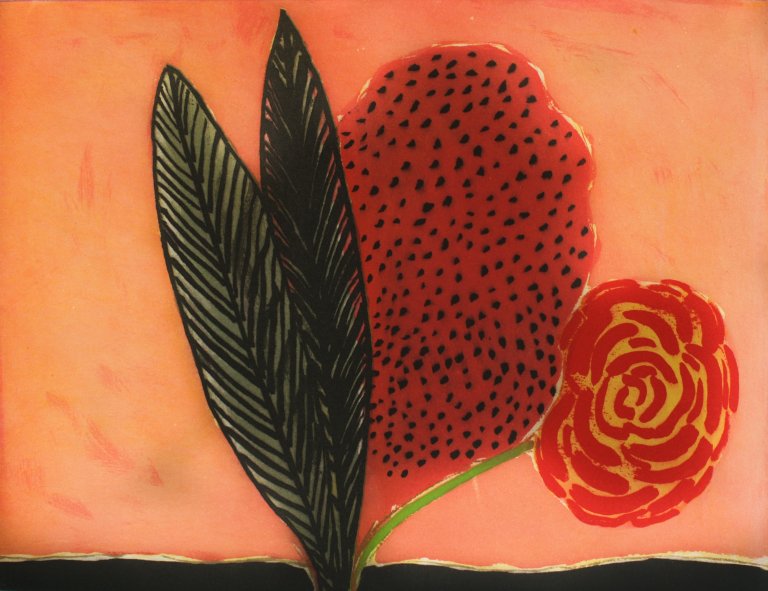
WILLIAM CROZIER (1930-2011)
20th March - 17 April 2021
The Art Stable is delighted to present an exhibition of prints by William Crozier (1930 – 2011). Crozier’s prints, though less well known than his paintings, share the same characteristics: vibrant colour, virtuoso drawing and a passionate engagement with the landscape and still-life, subjects Crozier explored throughout his long career.
Crozier approached printmaking as a parallel activity to painting, relishing the freedom of the print medium and his collaboration with master-printers. The prints in this exhibition were created between 1993 and 2010 at the Graphic Studio, Dublin and with the Berardinelli family of printers in Verona, each studio prompting distinctive approaches to image-making. Crozier explained the collective effort of making a print as akin to making jazz. He said “I see it as kind of an ensemble: one guy doesn’t know what the rest are going to do. With the colours of the band, a good musician is listening to the other person and he’ll wait and come in on the right note, and then someone else will come in.”
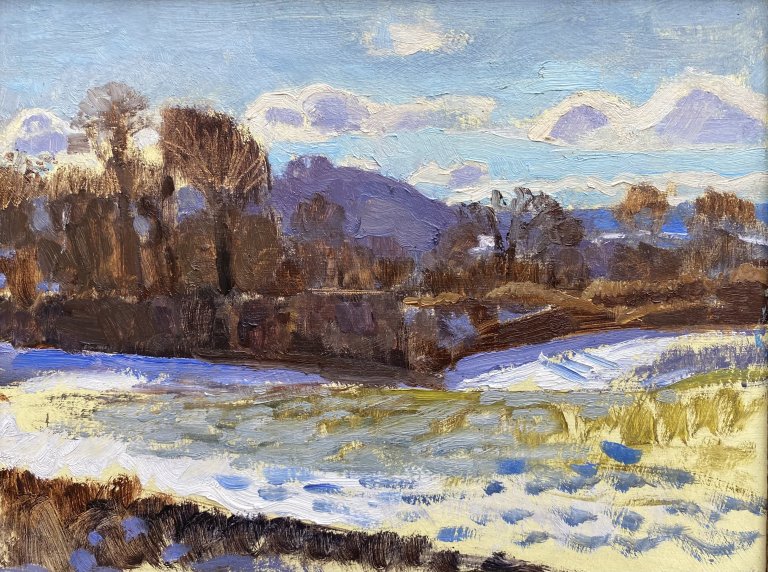
Christopher Riisager
6 February - 6 March 2021
Since graduating from Goldsmiths with a BA in Fine Art in 1984, Christopher Riisager has through a consistent and diligent working practice built a profound knowledge of the landscapes he loves in Wiltshire and Dorset. Constantly striving for new subjects and challenges through which to extend his painting, he travels the countryside looking for compositions that reveal something new in even the most familiar places to himself and, ultimately, the viewers of his work.
In his studio, set in the rural farmlands of the Dorset-Wiltshire border, Christopher surrounds himself with his experiments in painting, sculpture, collage and printing. All reveal a deep curiosity about and dedication to artistic explorations of form, figure, colour and texture extending through separate disciplines to inform each other. Closer inspection of the accumulated collection of older and more recent paintings reveals the solid influence of the tonal painting of the nineteenth century; the French classicism of Corot and the English stylishness of William Nicholson.
Often working en plein air, the race against the changing light and the weather enforces focus and speed. Christopher’s tacit knowledge of colour and light, built through years of experience and observation, result in paintings that invoke the beauty of a scene at a distance, but when drawn in to a closer view unexpected and beguiling motifs appear, capturing the ancient attraction of the Wessex landscape.
His studies of Wessex are supplemented with paintings of southern France, which provide an opportunity to work in a different scale and tone. The open vistas of south-east France studded with crumbling buildings and collapsed bridges, offer a contrast to the tree-enclosed cattle droves and sheltered, sheep-studded valleys of England.